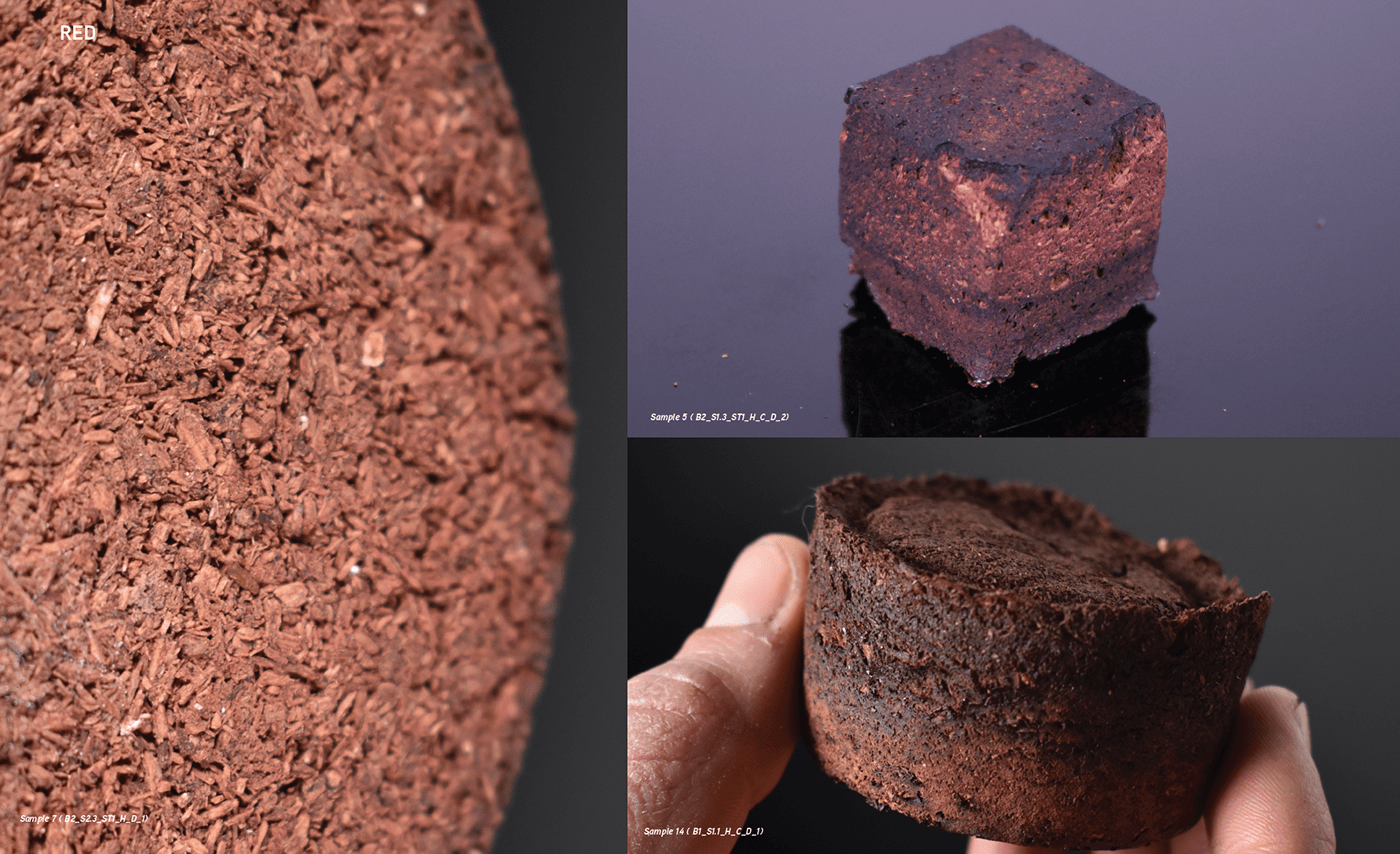
Blood Polymer
If we are to sacrifice life for our nourishment, let us respect it by truly appreciating everything which it gives us. If we are to be hunters let us be conscious ones.
Blood is a significant waste within slaughterhouses which if left untreated poses high environmental impact especially in wastewater, if treated it undergoes a high energy and transportation consumption to be sold as low-value fertilizer in big companies. 5.(Wang, Hawkins,Kiepper, Das, 2018).

Blood was the major component of the first-ever polymer, Hemacite (XIX century) (Paul Collins, 2002) by Dr. WH Dibble, which patented the process of compressing sawdust and blood with a hydraulic press providing great mechanical properties, durability and hardness. It was later explored in 2017 by Studio Sittgen 7.(Amy Frearson,2017) , where they would only employ blood into the hydraulic press resulting in a refined finish similar to bakelite polymer.

By generating materials that are coherent to a production system that is conscious of the implications each action implies in the wellbeing of human communities, environment and other living organisms is not just responsible but necessary.
It is the goal of the exploration of this material to generate familiarity, to accept it as a resource and not a waste, along with generating awareness of the processes we tend to ignore, how we source meat and how the meat industry is present even if you don’t consume meat.
We can begin to propose more coherent systems into those which are already existing by deriving knowledge from the past and beginning to be sensitive to that which nurtures us.

“If all the beasts were gone, men would die from great loneliness of spirit, for whatever happens to the beast also happens to the man. All things are connected. Whatever befalls the earth befalls the sons of the earth.”
- Native American Chiefof Seattle, Letter to the president 1855.

